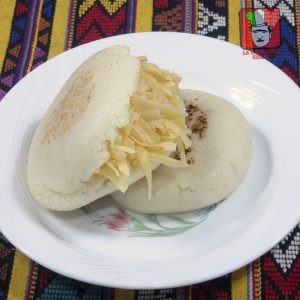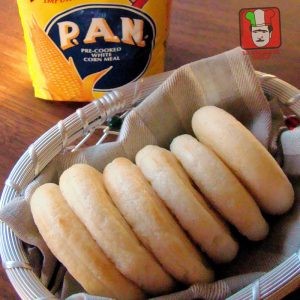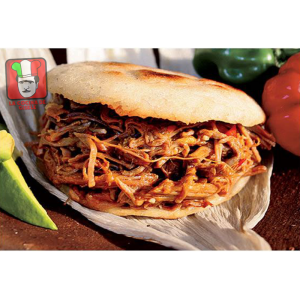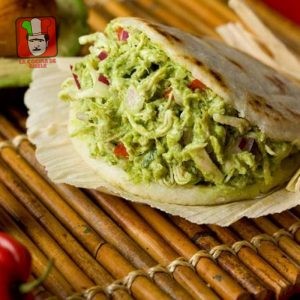If you are a fan of this traditional Venezuelan dish, you should keep reading and learn how to make them and how to make them quickly and easily
.
Regularly the arepa is a round and flattened bread made with corn flour, it is an emblematic dish of Venezuelan gastronomy and one of the main foods in the diet of all Venezuelans. It is not just a breakfast, it is a national emblem.
To make arepas we only need three simple ingredients, corn flour, water and a little salt. There are people who add oil but it is not necessary. When kneading, we must take into account not to leave lumps and obtain a very soft dough. It is very important to let the dough rest for 5-10 minutes to verify that it is soft, otherwise you have to add a little water. If at the time of making the ball and stepping on it to form a circle, cracks form, this will show that it is necessary to add more water.
The thickness and size of this dish is up to the taste of each person. They can make them thin and large or thick and small.
The corn flour that we need for this preparation must be pre-cooked. The most popular brand is white, yellow, or rice-enriched PAN. There are other brands but the favorite of Venezuelans is the one mentioned above.

Arepas are usually prepared in a utensil called budare. The budare is an iron plate that has been cured and is round in shape. You can also use a nonstick skillet. If you want you can use a grill iron and they will be perfect with the lines marked on the outside.

To fill your arepas you can use whatever you want. You can make them simple or combine them, it all depends on your tastes and your good palate. Butter, grated cheese, ham, avocado, scrambled eggs are some of the most popular.
In areperas (arepa sales) you can get arepas with their own names and that every Venezuelan already knows from childhood.
La Pelúa: stuffed with shredded meat stew.

Reina pepiada: stuffed with shredded chicken salad, avocado, onion, coriander and mayonnaise.

Pabellón: filled with caraotas (black beans), shredded meat, slices of fried plantain and grated white cheese.

Now that you know a little more about this delicious dish, I will explain how to make it.
Preparation time: 10 minutes
Cook time: 20 to 30 minutes
Ingredients
• 2 cups (300 gr) of precooked cornmeal
• 2 and ¼ cups of water
• ½ teaspoon of salt
Preparation:
1. Preheat the budare, frying pan or griddle. Have a napkin on hand to smear a little oil on the surface of the utensil. This will prevent the arepas from sticking together.
2. Place the precooked cornmeal in a bowl, add the salt and add the water little by little while kneading to avoid lumps. Then we must let the dough rest for at least 5 minutes.
3. You must verify that the consistency of the dough is malleable, it should have a consistency a little softer than plasticine, otherwise we must add more water. Then you need to take a portion of dough and roll into a ball, flatten with the palm of your hand to form a circle of the thickness you want.
4. With the napkin, oil the budare or the iron and place the arepa. We must cook it for 3 to 5 minutes on each side depending on how toasted you want the outside of the arepa.
5. The same should be done with the rest of the dough. Do not forget to oil the budare with the napkin each time you place a new arepa to prevent it from sticking.
6. Keep them in a basket or plate wrapped in a clean cloth to keep them soft and warm. Serve immediately with the filling or contour that you like best.

Tips to keep in mind:
• The flour must be made from precooked corn. Polenta flour does not work in this type of preparation.
• They can be served as a side to spread or open in the middle to fill them
• At the time of its preparation it is recommended that the arepas are made. It is desirable to have a cup of water to moisten your hands as